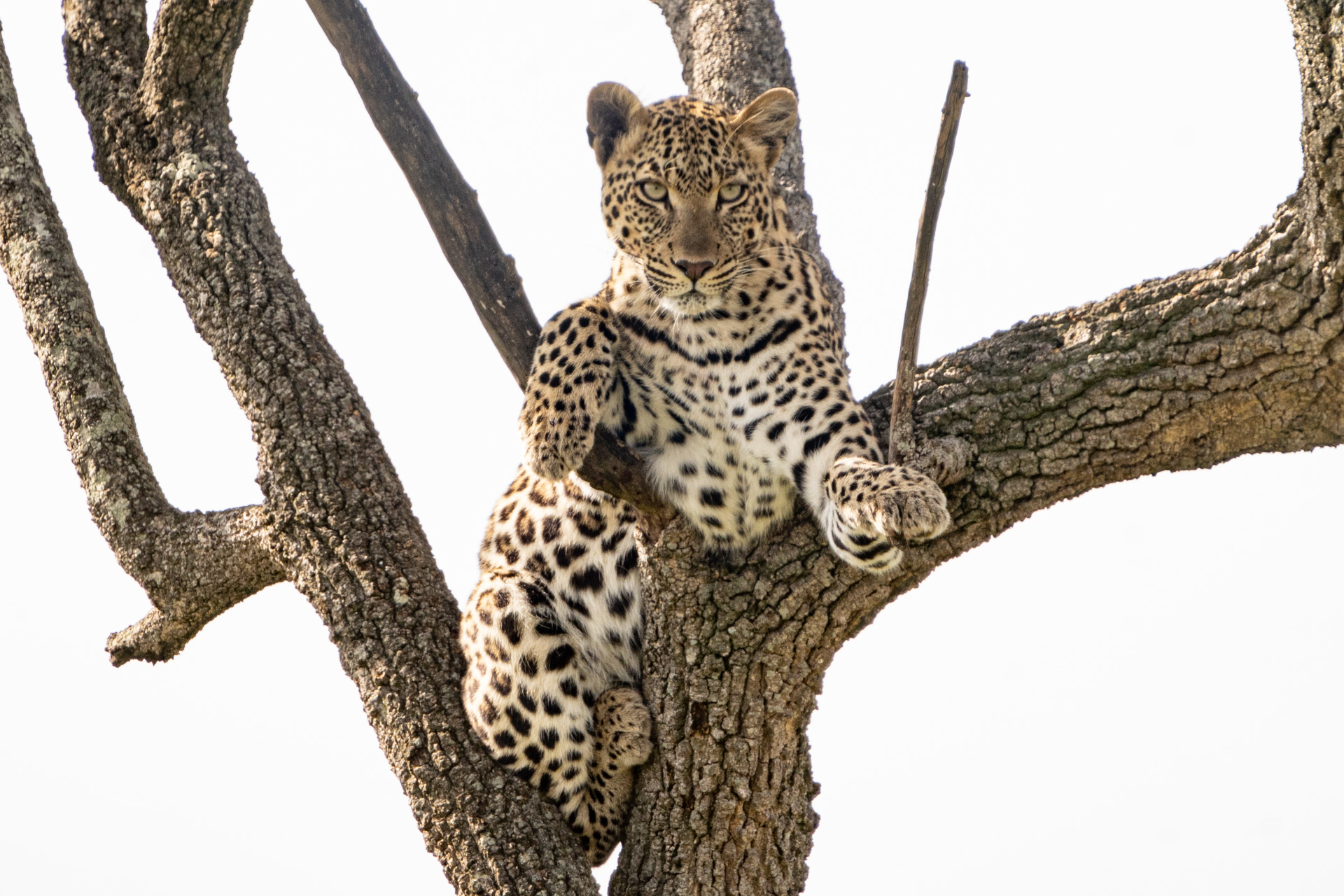In the wild, raising lion cubs single-handedly can, at times, be a heavy task. Nevertheless, the Angama lioness has been meeting the challenge, fiercely protecting her two remaining cubs. The killer male whom we believe extinguished her previous litter and then sired these cubs has not been seen around, perhaps he's out of the picture.
We hope that these cubs will survive and that no other intruding male will become interested in her, as they will also try to kill the cubs in an attempt to bring the Angama lioness back into oestrus, as was the case with her previous litter and how she became pregnant with the killer male's cubs.
Leopards are known to be very shy — but even more so when they have cubs. This week, Angama guests spotted a female leopard, who we saw recently with her cubs, following her closely. The new mother of two was seen with an impala kill stuffed up a tree; the cubs have probably already been introduced to meat as they have passed the weaning stage, which lasts until they are three months old.
The leopard was later seen basking in the sun but sadly, the cubs were nowhere to be seen. The guests did hear the cubs responding to their mum's calls as she slinked off into the bushes.
In the Maasai Mara, even more so in the Mara Triangle, it's uncommon to see the side-striped jackal. The medium-sized canid (a member of the dog family), is slightly larger than the silver-backed (also called the black-backed) jackal that we are more familiar with.
Unlike the related silver-backed jackal, the side-striped jackal is omnivorous and can opportunistically change their diet based on local and seasonal food availability.
We have been receiving a significant amount of rain and with that, the number of bird sightings has increased in the Mara. During the rains, birds tend to be more active in swampy areas where they forage for food. These saddle-billed storks also use the rain to their advantage for their meticulous preening. As the rain falls over them, they clean and groom their feathers, ensuring they remain in good condition and look as smart as ever.
The remaining five of the Nyati Six boys have been sighted this week and appear to be doing well. After losing one of their brothers to fatal injuries a while ago, they seem to be keeping close together. Angama Guide, Titus Keteko, saw them recently in what was once their late father Ol Donyo Paek's territory near the Escarpment. They climbed on top of a rock, looking out over their territory — if you have watched the movie The Lion King, this sighting would bring back some nostalgic moments.
Risasi's brothers, Ruka and Rafiki, also known as the Rosetta boys, have been spotted back in the Triangle. The two boys have migrated back from the Greater Mara and were recently spotted scent-marking on the same tree. It almost seemed like a competition to see who could go the highest and anything (and anyone) was fair game to spray — boys will be boys, as they say!
While we have been busy in the Photographic Studio, we have seen plenty of wildlife around camp as well, my favourite being the zebra that often wanders through.

A year ago, we spent three days with Nadallah as she took her time eating a reedbuck kill she had made earlier that week. She is still nowhere to be found in the Triangle these days.
Filed under: This Week at Angama
Subscribe for Weekly Stories
Comments (0):

Hot-air Ballooning